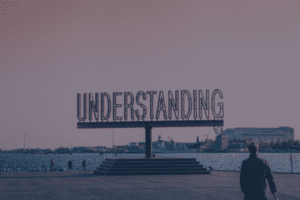
Teams, much like individuals, undergo distinct stages in their life cycles. Each developmental stage brings forth unique relationships and observable behaviors. Understanding these stages of team development is crucial for both team members and leaders to discern signs of normal team growth and progress. Moreover, the level of leader-team interaction varies across these stages. By collaboratively fostering the team’s growth, leaders and team members can enhance the likelihood of the team remaining cohesive and achieving its maximum potential. Use the following guide to assist your team in identifying its current stage and determining the most suitable team needs and leadership styles to either sustain that stage or advance to a new one.
Stages Of Team Development
Formation
The initial formation stage involves assembling the team’s structure. During this phase, team members may experience ambiguous feelings and attitudes. Conflict is often avoided as individuals seek acceptance within the group. Besides focusing on the tasks at hand, team members also contemplate each other’s roles.
Emotions and Thoughts:
- Emotions: Excitement, anticipation, and optimism
- Apprehensions: Suspicion, fear, and anxiety regarding the forthcoming job
- Sense of Pride: Feeling honored to be chosen for the group
- Tentative Attachment: Initial connections forming among team members
- Questions Arising: Pondering why they are part of the team and what expectations and influence they will have
Observable Behaviors:
- Demonstrating Politeness
- Being Guarded and Watchful
- Participation Occurring Sporadically
- Initial Agreements Formed
- Attempts to Define Tasks and Decision-Making Approaches
- Efforts to Establish Acceptable Group Behavior
- Engaging in Abstract Discussions on Concepts and Issues
- Identifying and Discussing Symptoms and Non-Relevant Problems
- Voicing Complaints About the Organization
- Making Decisions on Information Gathering
- Displaying Impatience During Discussions
Team Needs:
- Team Mission and Purpose
- Team Membership Composition
- Team Goals and Objectives
- Measurement and Feedback Mechanisms
- Definition of Roles and Responsibilities
- Team Member Expectations
- Team Operational Guidelines and Procedures
- Behavioral Norms and Values
- Effective Meetings and Facilitation
Required Leadership Style
The directing leadership style is essential during this stage, encompassing aspects such as telling, guiding, and establishing. The manager is highly task-oriented with relatively low involvement in building relationships. Clear boundaries are set, and communication primarily occurs in a one-way direction from the leader to the followers.
Storming
During this stage, team members experience competition and conflicts among themselves. As they work on organizing tasks, interpersonal issues and disagreements begin to surface. The focal points of this stage revolve around leadership, structure, and power dynamics. The team’s development hinges on transitioning from a mindset of testing and conflict to one of collaborative problem-solving.
Feelings and Thoughts:
- Resisting the tasks at hand
- Fluctuations in attitude toward the team’s progress
- Considering job-related risks and benefits of sharing information
- Weighing the risks and benefits of being open or closed within the team
- Evaluating agreement with the team’s purpose
- Reflecting on alignment with the team’s approach to task accomplishment
- Assessing personal influence and freedom within the team
Observable Behaviors:
- Arguments and conflicts among team members
- Defensiveness and competitive attitudes
- Formation of polarizations and pecking orders within the team
- Struggles for power and clashes over authority
- Lack of consensus-seeking behaviors
- Stagnation in progress
- Establishing unrealistic goals
- Concerns about excessive workload
- Tensions directed towards the team leader
- Confusion, loss of interest, or opting out by some team members
- Violations of the team’s code of conduct
- Poor attendance and participation
- Setting and achieving task milestones
- Team members adhering to the code of conduct
- A strong team identity and sense of unity
- A healthy balance of power within the team
Team Needs:
- Decision-making processes
- Problem-solving strategies
- Management coaching for team development
- Further enhancing leadership skills
Required Leadership Style
The supporting leadership style is essential during this stage, which involves committing, participating, encouraging, listening, and collaborating. The leader emphasizes a high level of relationship involvement and a lower level of task involvement. They have minimal influence in decision-making and promote discussion, actively seeking contributions from team members.




